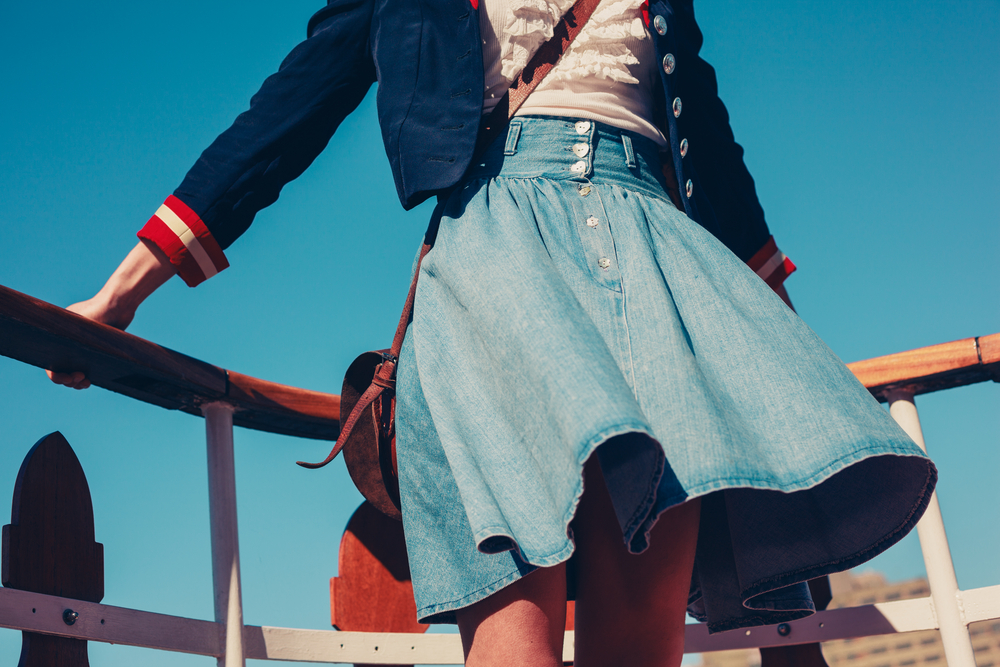Last week, an Oregon judge ruled that a 61-year-old man did nothing illegal when he crouched down in an aisle at a Target in suburban Portland and, without permission, took photos up the skirt of a 13-year-old girl. The man, Patrick Buono, admitted to engaging in behavior that Judge Eric Butterfield deemed “lewd” and “appalling,” but that isn’t technically a crime because it’s not expressly outlawed in the state. And so, here is my incisive commentary: What?
I have a few other questions, too, including, “But…why?” and “Um…how?” They’re the same questions I ask whenever a judge rules that “upskirt” photos and other creepshots are perfectly legal even if they’re grotesque, which is a trend that just keeps on keeping on. A few months ago, a similar ruling was handed down in Texas; just a few weeks after that, a D.C. judge determined that creepshots don’t violate a person’s right to privacy when they’re taken in public places, because it means that the victims were exposing themselves.
These cases often come down to frustrating, bewildering legal precedents that curtail a person’s “reasonable expectation of privacy” in public places such that “exposed” body parts — even if they’re exposed because a person is crouching on the ground beneath a woman in a skirt to sneak a peek — are fair game not just for glancing, but for recording too. Buono’s defense attorney, Mark Lawrence, summed it up well: “These things are not only seen but video-recorded … It’s incumbent on us as citizens to cover up whatever we don’t want filmed in public places.”
Allow me to speak from personal experience for a moment: As a woman who has gone out in public wearing skirts, and who has worn skirts expressly as a way to “cover up whatever I don’t want filmed in public spaces” (because skirts are generally understood to be clothes, which are good for covering undergarments and naked bodies), I tend to feel that I am holding up my end of this legally justified deal to hide “whatever” I don’t want seen. This, I venture to guess, goes for most other women who wear skirts sometimes, and for people who wear clothes in public generally. “Whatever we don’t want filmed” is covered, unless someone kneels down with the express intent of seeing (and photographing) what is not meant to be seen.
As it is, state laws tend to protect those people and place the burden on those whom they so actively attempt to violate. Judging by their court complaints, that latter category is composed of people who feel violated when “upskirting” and the like occur. And oh, how often those violated people are women.
It might be true that in Oregon or Texas or D.C. or elsewhere across the country, the law does not allow for judges to convict people for capturing private images in public places without consent. But laws are neither infallible nor fixed forever; they can, through this thing called “the legislative process,” be supplemented. And it would appear from the continuous cropping up of cases such as Buono’s that there is a need to change the precedent — a precedent that places the burden on victims to prevent needless violations of their bodily integrity and their privacy, while protecting offenders — by shutting it down.
Judge Butterfield expressed discontent with his ruling to acquit Buono, calling the decision “upsetting” and telling the Oregonian he was “extremely frustrated” with it. But there is room for more frustration about Butterfield’s decision, about the acquittals that have informed it and the acquittals to come, and about the gaps in the law that leave citizens vulnerable to violation. These “upskirting” cases, all of them the same, illustrate the same need for improvement. So, seriously, how is this still legal?


